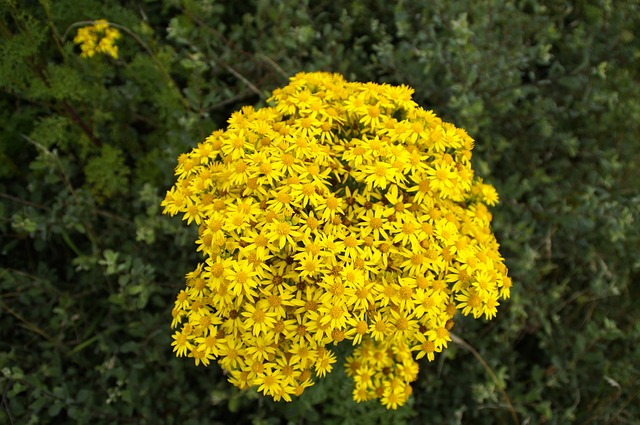
If you have a love and passion for horses, you'll know first-hand the effects that toxic weeds such as ragwort can have on livestock. Although beautiful to look at, ragwort has the ability to cause serious problems for your horses, especially if left unchecked.
In this blog, we take a closer look at ragwort, find out exactly what it is and the ways in which you can control it in your paddock to stop it from harming your horses.
So, to find out how to keep your horses safe from dangerous ragwort weeds, read on!
What is ragwort?
Common ragwort (Senecio jacobaea) is a wildflower native to Eurasia but is now found throughout the world. It is a poisonous plant that has become increasingly popular here in the UK and can be seen growing along roadsides, on wasteground and in areas of poor land management, spreading easily onto neighbouring farms and pastures.
Since establishing itself in Britain, ragwort has become a perennial problem for owners of paddocks and fields thanks to its ability to harm equines and livestock and as such, has been classified as an 'injurious weed' by DEFRA under the Weeds Act 1959. This means that any failure to control ragwort on your land could lead to prosecution.
Why is ragwort harmful?
Ragwort can endanger horses and livestock as it contains toxic alkaloids, which are poisonous to both people and animals. Within the ragwort plant, the alkaloid appears in a non-tocix form, however, after the plant is eaten, it changes within the intestines and then breaks down in the liver. These broken down products then become toxic and harm the animals.
As a result of this process, it is often difficult to spot ragwort poisoning until it is too late. Poisoning can occur at any time of the year, generally having a cumulative effect. A very small intake over a long period of time can be just as damaging as a large intake over a shorter period of time.
How do you get rid of ragwort?
Once identified, it is important that you get rid of ragwort as soon as possible. The longer that you leave ragwort to its devices, the more chance there is of it spreading even further across your paddock or pasture.
When it comes to removing ragwort, you have three options; cutting, pulling/digging or applying herbicides.
Cutting
By cutting ragwort at the early flowering stage, you reduce seed production. This is often an acceptable method of control, however, it is not generally recommended as it can encourage more vigorous re-growth.
Pulling/Digging
Pulling or digging out ragwort will need to be performed before flowering has finished and is much easier when the plant is in an immature stage or just after bouts of heavy rainfall when the ground is soft.
Due to ragwort being biennial (grows every other year), this method of removal will need to be carried out for at least two years. However, if your pasture or paddock has a history of ragwort growth, then this will need to be done every year due to the remaining seeds in your soil.
It is vital to remove as much of the ragwort root as possible as it can easily re-generate from as root as small as 1cm. Tools such as a rag fork can be used to make this process easier.
Herbicides
The final method of getting rid of ragwort is through the application of effective herbicides at the right time of year. Here, you need to consider the most suitable product and application method as to not disturb grazing or harm the surrounding environment.
Advice on the right type of ragwort herbicide for your paddock can be found through your local authority. Be sure to follow instruction on any herbicide label thoroughly to ensure safe and effective application.
How to dispose of ragwort
The options of disposing ragwort will depend on the amount that you have to get rid of and whether or not your land comes under domestic or noon-domestic classification.
Ideally, ragwort should be disposed of on-site but this is not always possible. For smaller amounts of ragwort, the easiest to dispose of it is to burn it, however, you should double-check with your local authority that this is allowed. You should never leave removed ragwort in places where animals can access and consume it.
To be safe and to avoid ragwort from re-growing from seed, it should be kept in an enclosed container or secured bags, especially if you need to transport it. Other methods of disposal include landfill sites, rotting down, incineration and composting.
How we can help
Total Weed Control can help with the entire process of ragwort eradication. From the first stage of identification right through to disposal. Our experienced and professional team are able to visit your site and recommended the best treatment plan in any case of ragwort infestation.
But not just that, we can also help to identify any invasive weeds that have taken over your pasture AND improve the quality of your grass, making it even better for your grazing animals!
Sounds good? Find out more about how we can help by visiting our weed clearance page below.
Weed Clearance Services >
For more information on our horse paddock weed control or how to get rid of ragwort, please do not hesitate to get in touch with a member of the Total Weed Control team today by submitting the simple contact from below!
